Buildings and constructions in a farm are called farm structures.
The buildings include animal houses and animal sheds while constructions include fences and crushes.
All the buildings and constructions are necessary if we have to care for livestock properly
1. Drainage: the structure must be constructed at a place with good drainage to ensure that the animal structure is always dry and no livestock parasite can breed around.
2. Security: the animal structure should be appropriately close to the farm-house so that the farmer can keep an eye on the animals to be able to protect them from thieves or carnivores such as lions.
3. Noise: the animal structure need to be located at the place with least noise.
Poultry for instance get depressed if there is too much noise. This reduces their rate of laying.
4. Water: water and other facilities like adequate Lighting and warmth should be available.
5. Wind direction: the structure should be shaded from direct wind.
They should also not be erected where bad smells from the animal stalls blow towards the farmhouse.
6. Floor to be covered with litter for example wood shavings.
The intention is to keep the floor of the animal structure dry and warm.
All animals need housing to protect them from rain, sun, and other things that may harm them.
The animal house should be well maintained and repaired everytime they are not intact.
The animal house should be cleaned to keep away disease pathogens and pests.
The houses should also be dusted with insecticides and pesticides.
The animal feeds can be classified broadly into
These are animal feeds that are made from either plant or animal materials.
They have low fibre content, low moisture content, and are high in nutrients.
Concentrates are easily digested.
[resource: 2030, align: left]
The concentrates are further subdivided into:
1. Energy or Carbohydrates concentrates, which are rich in carbohydrates.
Examples are molasses and cereal grains such as maize meal, which come from plants.
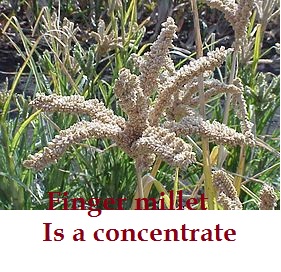
Groundnuts or cotton-seeds may be consumed as fat concentrates since they provide energy from the oils they produce.
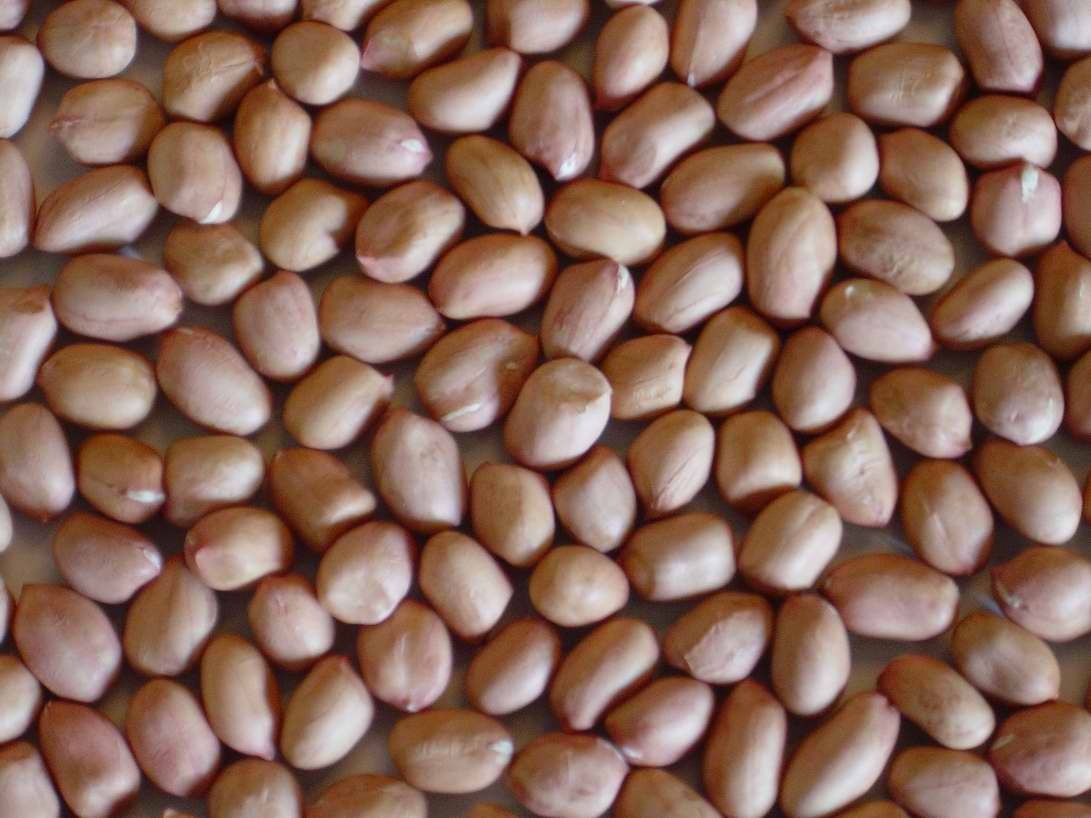
These are bulky animal foodstuffs that are gotten from plants.
They have very high fibre content and low nutrient content.
Roughages can be grouped as:
1. Dry roughages: These have low moisture content and are high in fibres.
Examples of dry roughage are straws (from wheat and barley), dry maize stalks, hays (legumes and grass) and fodder.
2. Wet roughages
Wet roughage feeds are also called Succulents.
They contain high moisture content and are low in fibre.
They contain starch, proteins, minerals and vitamins therefore forming a complete feedstuff for livestock.
Examples include kales (sukuma wiki), soft green grass, sweet potato vines and chopped potatoes
Pasture and silage are also examples of wet roughage.
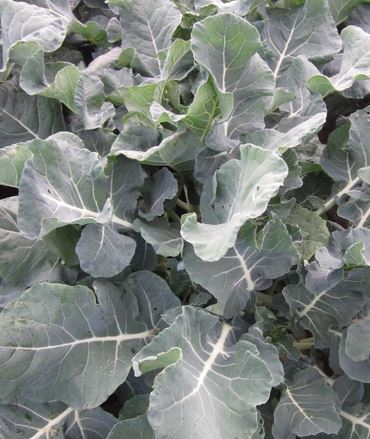 Kales
Kales
Livestock such as cows, sheep and camels eat grass in the field.
This is called grazing. The places or fields where animals graze are called pastures.

The grass which grows naturally without being planted by human beings are called natural pastures.
When farmers plant fields with grass and legumes, they are called artificial pasture.
The common grasses found in pastures are Star grass, Rhodes grass, and Kikuyu grass, while the common legumes are Lucerne and Clover.
In cases where grasses and legumes are planted together in a field, then we call this Mixed pasture.
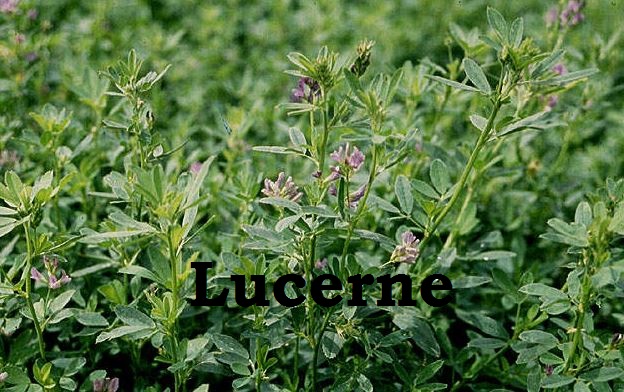
When a farmer has pasture that is not used for grazing, he/she may cut the grass then dry it for future use.
Such kind of feed is called hay and can be made into bales for better and economical storage in a storage shed.

Pastures provide a complete diet for livestock as they contain the basic nutrients.
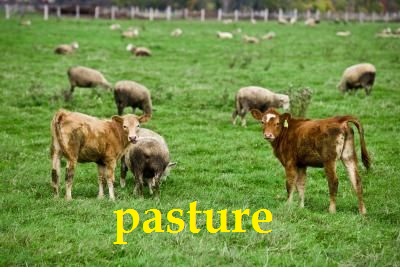
The pastures contain carbohydrates (the energy giving foods), proteins (the body building and repair foods) and vitamins and minerals (which protect the body from disease).
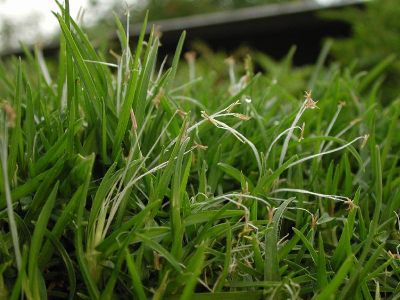
These are livestock feedstuff that are planted and then harvested as animal feed but not given directly to the animals.
Sometimes, when harvested, they are chopped and then mixed with supplements such as molasses, protein supplements, minerals and vitamins.
Additives such as medicinal products, colouring materials and flavours can also be added.
The protein supplements added to fodder may be animal products such as bone meal, feather meal, fishmeal, blood meal or even skimmed milk.
Examples of fodder crops are sweet potato vine, Napier grass, green maize, sorghum and kales.
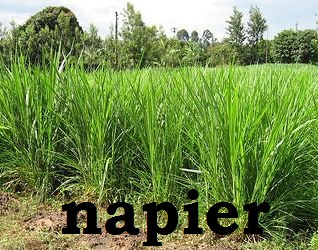
If a farmer has excess fodder, it could be harvested while still green and stored in a pit which is then covered to conserve the fodder.
Salt may be sprinkled to the fodder.
When fodder is conserved in a pit it remains in a succulent or juicy form.
This fodder is referred to as Silage
Just like human beings, livestock need a balanced diet to provide the nutrients needed to stay healthy and to produce products such as meat and milk of better quality.
Animals need water in adequate amounts.
The water must be clean and the containers in which water is put should be clean.
The indicators of animals that are not fed on balanced diet are:
• Animals look emaciated, they are thin and weak. The young animals are stunted because of retarded growth.
• The animals have infections.
• The bones of the animals are soft, poorly formed, show signs of rickets and can break easily in case of accidents.
• The yield of the animal products like eggs, milk or wool, drop consistently.
• The animals may finally die of malnutrition if the situation persists for long.
Animal feeds can be grouped into concentrates, roughage, supplements, additives and animal products.
Body growth and repair.
To make good quality products such as milk, eggs and meat
Protein concentrates, mixed pastures, lucerne grass, legumes, layer’s mash / broiler’s mash / chick mash, weaner meal, wheat bran, dairy meal Carbohydrates Energy production.
To make good quality products such as milk, meat, eggs, wool.
Sweet potato vines, maize stalks, crushed maize cobs, napier grass, wheat bran, layer’s mash/ broiler’s mash/chick mash, rabbit pellets, molasses, weaner meal, sow meal
Fats and oils Energy production.
Formation of some parts of the body.
Natural pastures, energy concentrates such as groundnuts, fish meal Minerals and vitamins
Formation of bones and teeth.
Body growth.
Resistance to diseases.
Salt licks, concentrates, kales, sweet potato vines
Facilitates the roughage
Ease of digestion.
Passing of the faeces easily
Natural pasture, fodder crops, napier meal, wheat bran Water (clean)
To transport things in the body for good digestion.
The body cannot function without water
Direct intake of water, fresh fruits and vegetables
All the domestic animals need to be taken care of in various ways.
Livestock can be taken care of in the following ways:
• Providing shelter for them
• Feeding them
• Giving them water
• Giving them medical care to get rid of livestock diseases
• Protecting them against parasites and predator
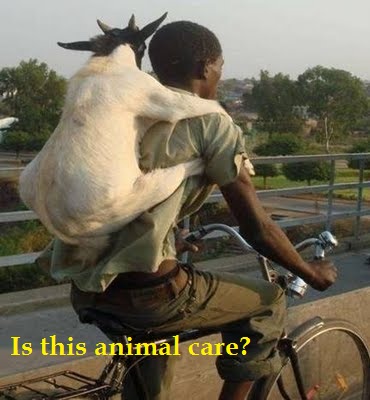
Standard 6
1. A farmer fed his cows on feeds containing carbohydrates and proteins then gave them plenty of water. What other constituents of the diet were lacking to make it balanced?
A. Vitamins and minerals B. Vitamins and oils.
C. Fats and vitamins D. Minerals and oils
2. Which one of the following statements is NOT TRUE about rotational grazing?
A. Animals use pasture properly B. Pasture has time to grow again
C. Soil erosion is increased C. Parasites are easily controlled
3. Which one of the following is an advantage of zero-grazing?
A. It requires less skill to manage B. There is less feed wastage
C. It is cheap to start D. It requires less labour
4. Which one of the following fodder crops is rich in proteins?
A. Kales B. Lucerne C. Napier grass D. Maize
5. Which one of the following livestock feeds is a concentrate?
A. Saltlick B. Lucerne C. Silage D. Hay